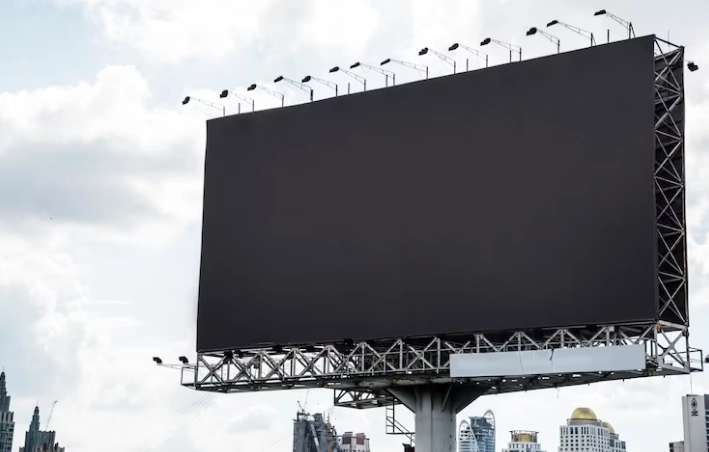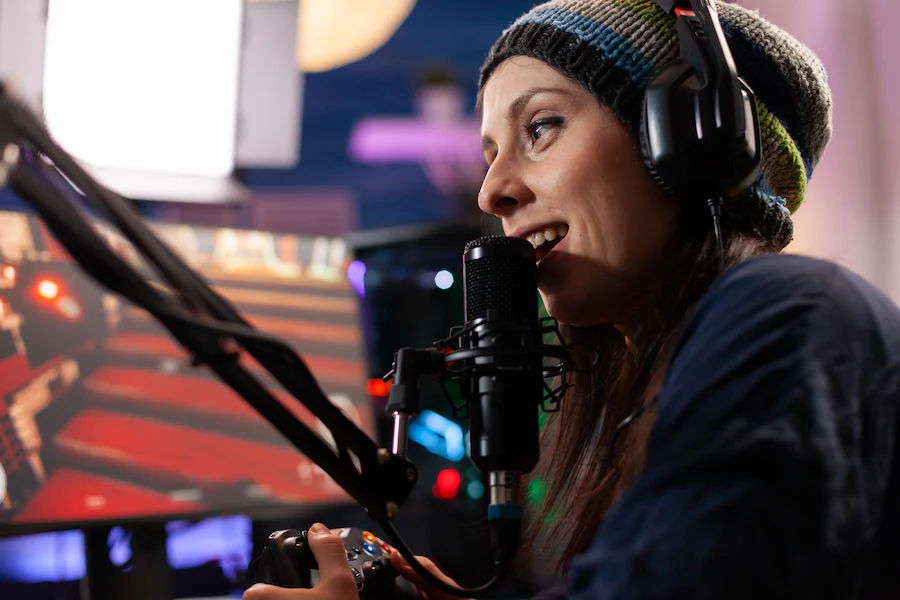Have you ever found yourself glued to the screen because of a commercial? Don’t worry, you’re not alone! Commercials are created to do that and more! While many of them can be irritating, some are so entertaining that they become a topic of conversation. In this article, we’re going to talk about what they are, how they’re created and look at some examples.
What is an advertising spot?
An advertising spot is a short form of advertising that is transmitted through media such as television, radio, Internet or even cinemas. Its objective is to promote a product, service or brand through a short and concise story or message that catches the viewer’s attention and motivates them to perform a specific action, such as buying a product or visiting a website. Advertising spots are usually between 15 and 60 seconds long.
Types of advertising spots
TV spot: A TV spot is an advertisement that is aired on a TV channel during a program or commercial break. It usually has a duration of 30 seconds to 1 minute.
Radio spot: A radio spot is an advertisement that is broadcast on a radio station. Unlike television commercials, radio spots are audio-only and do not have a visual portion. In general, radio spots are 10 to 60 seconds long.
Printed spot: A printed advertising spot is an advertisement that is published in media such as newspapers, magazines, posters, brochures, among others. Unlike television or radio advertising spots, print advertising spots are static. Since print media have a longer shelf life than electronic media, they can continue to generate impact for a longer period of time.
Online spot: An online spot is an advertisement that is displayed on websites, mobile applications, social networks and other digital media. These ads can take many forms, such as banner ads, pop-up ads, video ads, etc.
Film spot: A film spot is a commercial where a preview of the movie to be released is shown. There are usually several spots of different lengths that are released months before the premiere.
Billboard spot: A billboard spot is an advertisement displayed on a billboard, which is a large structure placed in strategic locations, such as highways, avenues and busy streets. Billboard spots are an effective way to promote a product or service to a wide audience.
Public transport spot: A public transport spot is an advertisement displayed on public transport vehicles, such as buses, cabs, trains and subways. These ads are usually visual and can take many forms, such as window stickers, in-vehicle posters and video ads on screens.
Social media spot: A social media spot is an ad that is displayed on Facebook, Instagram, Twitter, LinkedIn and other platforms. These can take many forms, such as images, short videos, carousel ads and story format ads. Their main advantage is that they can be created for deeply targeted audiences.
Spot in mobile applications: This can be an advertisement that appears on the user’s screen while using the application, an installed game or a language app, for example.
Spot in sporting events: This type of spot is the one that appears on screens or banners in stadiums, courts, racetracks, etc. They are projected during the event that is taking place.
Spot on digital screens: These spots are shown on screens that can be located in public places such as shopping malls, transportation stations, or in private places such as stores and restaurants.
Pre-film spot in the cinema: In the cinema, the trailer fragments shown before the film starts are also advertising spots.
Spot in video games: In video games, a spot refers to an advertisement that appears during the game, for example, in a loading screen or in an advertisement at the bottom of the screen.
Spot on web pages: On most web pages, somewhere on the screen, advertisements appear in the form of a banner, pop up or video, these are spots.
Spot in direct mail: In direct mail, a spot refers to an advertisement that is included in material such as a brochure or catalog.
Spot in gas stations: In gas stations, it is shown on the digital screens of the gas pumps or on the screens inside the premises.
Spot in private transportation: In private transportation, a spot refers to an advertisement shown on the monitors of transportation vehicles.
Spot in live events: During a live event, advertising spots are shown either on the transmission screen, on the screens of the place where the event is taking place or in the speech of those who are presenting the video.
Spot on digital screen networks in public places: In digital screen networks in public places, a spot refers to an advertisement shown on screens in places such as parks, squares or streets.
Spot in streaming channels: In streaming channels, a spot refers to an advertisement shown during the playback of online content, whether video or music.

Do you want to start monetizing in streaming now?
Reach Gen Z through major streaming platforms!
Characteristics of a good advertising spot
Creativity
Creativity is an essential characteristic in the creation of an effective advertising spot. A creative commercial is one that captures the viewer’s attention and conveys the message in a clear, memorable and convincing way. A creative advertising spot differs from other ads because of its originality, innovation and ability to surprise the viewer. To achieve this, advertising creatives use different techniques, such as humor, emotion, surprise or provocation, in order to generate a response in the viewer.
Clear message
A clear message is considered clear when the viewer easily understands what is being promoted and what benefit is being offered. To achieve a clear message, it is important that the advertising spot has a clear and well-defined value proposition. In addition, the message must be presented in a simple and easy-to-understand manner. This implies using clear and direct language, avoiding jargon or technical terms that may confuse the viewer.
Emotionally impacting
It is that spot that manages to generate an emotional response in the viewer, either through the use of empathy, identification with the characters, provocation or surprise. This type of ad focuses on creating an emotional bond with the brand or product being promoted. For example, it can generate feelings of happiness, hope, sadness, empathy or even indignation. To achieve this, the message must be authentic and based on a true story or an experience that the viewer can identify as his own, and it is also important that the message is consistent with the brand’s values and image.
Adequate duration
The appropriate length of an advertising spot is a key aspect to ensure its effectiveness. In general, it is considered that the ideal length for an advertising spot is 15 to 30 seconds. This length is sufficient to convey the main message of the ad, without boring the viewer or making them lose interest. It is also enough time to include visual and auditory elements that help reinforce the message.
Visual and audio quality
In terms of visual quality, it is important that the spot has a sharp, high-resolution image that allows the viewer to clearly see the details of the ad. In addition, other elements such as lighting, colors, composition and special effects must be designed in a coherent and attractive way. In terms of audio quality, it is important that the commercial has a clear and well-mixed sound, allowing the message and the sound elements of the ad to be heard clearly. Music and sound effects can also be effective tools to reinforce the message and create an emotional atmosphere. It is important to remember that the visual and audio quality of the ad should be a function of the medium in which it will be broadcast. For example, a TV ad may have a higher visual and audio quality than a social media ad.
Call to action
This part of an advertising spot is fundamental. The objective of the CTA (Call to action) is to motivate the viewer to perform an action that is aligned with the objectives of the advertising campaign. A good CTA should be clear, concise and compelling. It is important to use direct language and emphasize the benefits that will be obtained by performing the action. It should also be easy to understand, easy to find and easy to perform.
Memorable
This feature is what makes the ad be remembered by the audience after they have seen it. It can be any element of the ad that catches the viewer’s attention in a positive way and makes them remember the message of the ad campaign. Generally, the memorable feature of an ad spot is something that surprises the viewer, whether it is creativity, humor, originality or emotionality. It can also be a visual or auditory element that stands out from the rest of the ad. A very common way to achieve something memorable is a catchy phrase, such as Nike’s ¨Just Do It¨ or McDonald’s ¨I’m loving it¨.
Aligned with the brand
The spot must be aligned with the brand because it is a way to ensure that the message being conveyed is consistent with the values and image to be transmitted. When an advertising spot is not aligned with the brand, it can generate confusion or even damage the brand’s reputation. When an advertising spot is aligned with the brand, it can reinforce the positive image that the brand wants to convey and generate an emotional connection with consumers. It can also have a long-term effect on consumers’ perception of the brand.
Adaptability
An advertising spot must be adaptable to different media because each medium has its particularities and unique audiences, adapting it will make it effective in each of them. In addition, adaptability to different media allows the advertising campaign to reach a wider and more diverse audience. An example is the adaptability of an advertising spot to different languages and cultures. If a brand wants to expand into new international markets, it is necessary for the advertising campaign to be adapted to the characteristics and preferences of each culture and language.
How much does an advertising spot cost?
The cost of an advertising spot depends on several factors, such as the duration of the spot, the time of day it is aired, the target audience and the television channel or radio station on which it is broadcast. In addition, the cost may vary according to the country or region in which the spot is broadcast. Therefore, it is difficult to provide an exact figure without knowing the specific details of the ad spot in question as an example, below I will tell you about the cost in 3 different countries.
United States
TV: In smaller or local markets, spot prices can start as low as a few hundred dollars for a 15-second spot in less popular time slots. In national markets or popular channels with a large audience, prices can range from several thousand dollars to several hundred thousand dollars for a 30-second spot.
Radio: As in television, the price will vary depending on whether it is a national or local radio station, and can start from a few dollars to several thousand dollars for a 30-second spot.
Major event: During major special events, such as the Super Bowl, advertising spot prices can reach several million dollars for a 30-second spot.
Spain
TV: Generally, prices can range from a few hundred euros for a 20-second spot on low audience local channels, to several thousand euros for an ad on high audience channels and in high impact time slots.
Radio: The cost of a radio spot in Spain also varies depending on the time of day, the duration of the spot, the station and the program in which it is broadcasted. As in television, costs start from a few euros to several thousand euros for spots on national stations and during prime time programs.
Major event: In general, the cost of an advertising spot at a major national event in Spain can range from a couple of thousand euros to several hundred thousand euros for a 30-second spot.
Mexico
TV: In smaller markets or local channels, advertising spot prices can start as low as a few thousand Mexican pesos for a 30-second spot in less popular time slots.
Radio: In general, prices can range from a few hundred pesos for a 30-second spot on local radio stations with low audiences, to several thousand pesos for spots on national stations and during prime time programs.
Major event: In major sporting events in Mexico the costs of an advertising spot could range from several hundred thousand to millions of Mexican pesos. On the other hand, events such as entertainment industry awards (e.g., Premios Ariel, Premios TV y Novelas) or renowned music festivals can have a wide range of costs, ranging from several thousand to hundreds of thousands of Mexican pesos.
In addition to traditional media, spots can also be created on networks. Their cost per ad is determined by auction and is based on reach, relevance and competition. The average price per click (CPC) can range from a few cents to several dollars, and the cost per thousand impressions (CPM) can range from a few dollars to tens of dollars. Although each country’s pricing is different, the method by which the cost is calculated is the same. The final cost will depend, almost exclusively, on how much the advertiser is willing to pay.
How to make a good advertising spot?
Define the objective
Before you start creating an ad spot, it is important that you define the objective of the advertising campaign. Do you want to increase sales? Improve brand recognition? Launch a new product? Defining your objective will help you create a clear and effective message.
Know your audience
To create an effective ad, you must know your audience: Who are your ideal customers, what is their age, gender, education level and buying preferences? Identifying your audience will allow you to create a message that resonates with them and motivates them to take action.
Understand the interests of your audience
Once you have identified your audience, it is important to understand their interests and needs. What problems do they face? What are their desires and aspirations? Understanding your audience’s interests will allow you to create a message that resonates with them and motivates them to take action.
Creates several concepts
Now it’s time to create various ad spot concepts. You can explore different angles and approaches that resonate with your audience. Make sure each concept is aligned with the objective of the ad campaign and has the ability to motivate your audience to take action.
Ask for feedback from third parties and experts
Once you have created several concepts, it is important to get feedback from third parties and advertising experts. You can ask for opinions and suggestions from friends, family, co-workers or even marketing and advertising experts. Then, select the best concept that fits your target, your audience and your audience’s interests.
Write the script
With the best concept selected, it’s time to write the script. Make sure the script is clear, concise and persuasive. Start with an introduction that captures your audience’s attention, present the problem your product or service will solve, present the solution and the benefits your product or service offers, and finally call to action.
Production planning
Once you have the script, it is important to plan the production. This involves the selection of locations, actors, film crew, music and other elements necessary to create the commercial.
Filming and editing
With the planning complete, it’s time to create and edit the ad spot. Make sure everything you create is of excellent quality, creative and reflects the message you want to convey in a concise, easy to understand and memorable way.
Test and adjust
Before launching your commercial, it is important to test it and make adjustments if necessary. You can show the video to friends, family or team members to get feedback and make changes if necessary.
Distributes and promotes
Finally, it’s time to distribute and promote the spot. You can post the video on online platforms, share it on social media and use other promotional tactics to make sure it reaches your target audience.
By following these steps, you’ll be on your way to producing an effective ad spot that motivates your target audience to take action.
Examples of the best advertising spots
“Hilltop” (1971)
“Hilltop, Remastered” is one of Coca-Cola’s most famous spots. It features a diverse group of young people of different nationalities singing “I’d Like to Buy the World a Coke” on a hill. The spot conveyed a message of unity and peace, becoming a lasting success.
“Unlimited You” (2016)
Nike – Unlimited You is a campaign in which Nike highlighted the unlimited potential of people in all areas of life. The spot featured famous athletes and ordinary people overcoming obstacles and challenging their own limits, inspiring viewers to discover their true potential.
Old Spice: “The Man Your Man Could Smell Like” (2010)
Old Spice | The Man Your Man Could Smell Like This ad starring actor Isaiah Mustafa went viral for its humor and quirky style. It helped revitalize the Old Spice brand and made a huge impact on social media.
Budweiser
Budweiser “Wassup?” 1999 is an ad that went viral and created a cultural phenomenon. It featured a group of friends repeatedly greeting each other with the famous “Whassup?” in different comical situations.
Pepsi: “Pepsi Max – Test Drive” (2012)
In this spot, Jeff Gordon, a famous race car driver, does an undercover test drive with a car salesman. The experience becomes exciting and action-packed, showcasing the car’s performance and generating surprise.
McDonald’s: “I’m Lovin’ It” (2003)
This McDonald’s – I’m lovin’ it ad campaign (Spain, 2003) includes a catchy jingle that became a globally recognized slogan. The ads showed people of different ages enjoying the fast food chain’s products.
“Mediterráneamente” (2009)
This Estrella Damm spot presents a story that celebrates the spirit of summer and Mediterranean life. It shows a young man falling in love with a girl and living unforgettable experiences while enjoying Estrella Damm beer in different parts of the Mediterranean. The music, the aesthetics and the festive atmosphere transmit the essence of the brand.
Audi: “Vampire Party” (2012)
Audi “Vampire Party” Super Bowl Commercial 2012 shows a vampire party in which one of them has an Audi and benefits from its advanced technology. It is a unique blend of humor and cinematic style that highlights the car’s features.
Heineken: “The Entrance” (2011)
Heineken Commercial 2011 – The Entrance features a charismatic man who arrives at a party in epic fashion, facing various challenges along the way. It’s a combination of style, humor and confidence that reflects the brand’s personality.

Want to start advertising on stream?
This is your chance to reach Generation Z through the leading streaming platforms!
Conclusion
In conclusion, advertising spots are a powerful tool to promote products and services effectively. Through a clear and persuasive message, advertising spots can motivate the audience to take action and increase sales, improve brand recognition and launch new products. To create an effective advertising spot, it is important to define the objective of the advertising campaign, know the audience, understand their interests, create several concepts, test and adjust, and finally distribute and promote the advertising spot. With these steps, any company can create an effective ad spot that resonates with its audience and achieves the objectives of the advertising campaign. Here, a good option is to rely on Streamion, a leading streaming platform in which many brands place commercials in the broadcasts of the most famous streamers, such as: Argentinean streamers, Mexican streamers, Spanish streamers and female streamers







